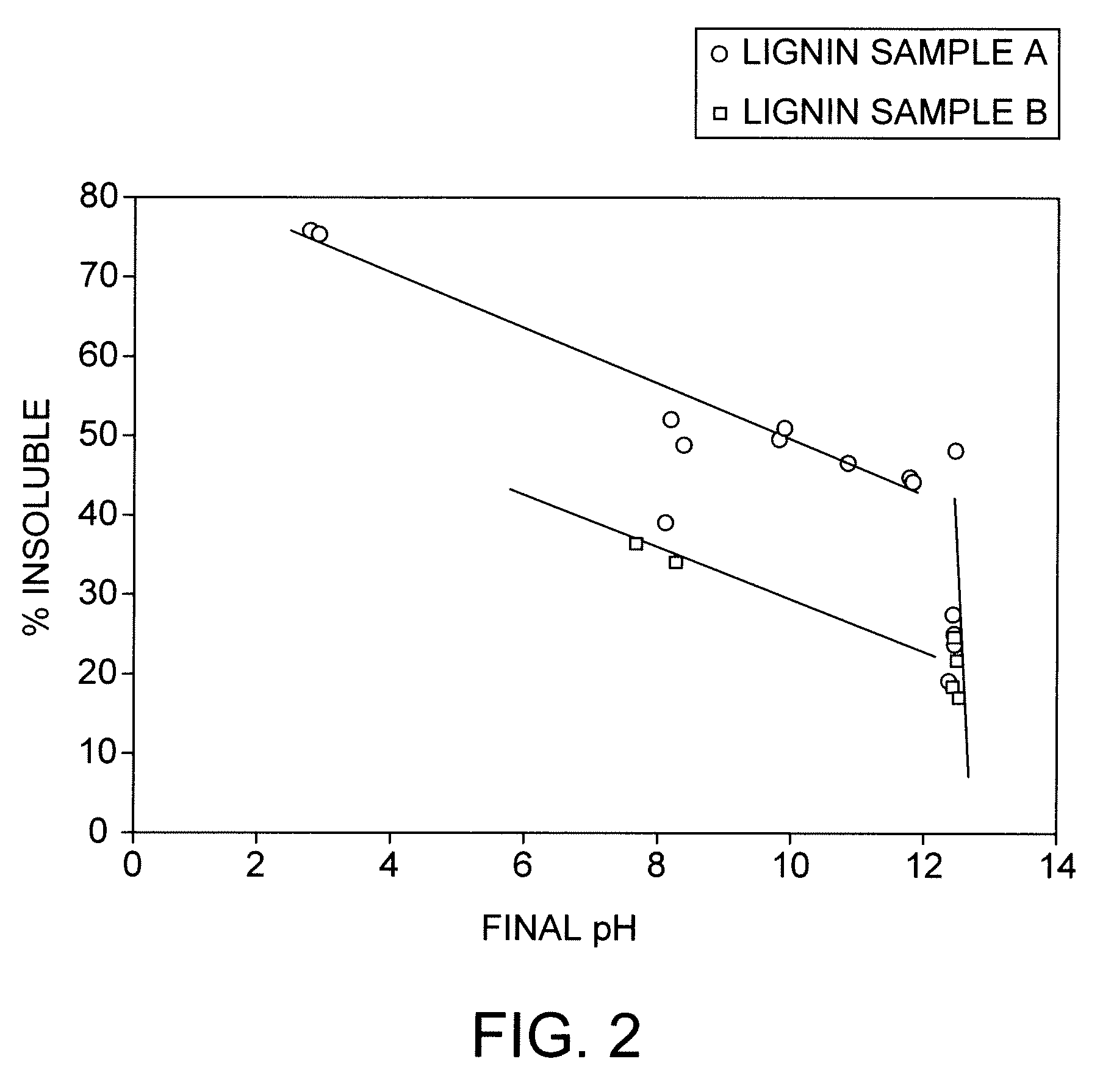Combination of Hydrogenation and Base Catalyzed Depolymerization for Lignin Conversion
a technology of hydrogenation and base, which is applied in the field of biomass hydrocarbon extraction processes, can solve the problems of additional cracking of some residual lignin polymers, and achieve the effects of reducing the amount and strength of base and reducing the oxygen conten
- Summary
- Abstract
- Description
- Claims
- Application Information
AI Technical Summary
Benefits of technology
Problems solved by technology
Method used
Image
Examples
Embodiment Construction
[0011]Biomass comprises a substantial amount of carbonaceous material that can be converted to hydrocarbons. Generally, the biomass material comprises carbohydrates, and other oxygenates. One important organic material is the lignin that is found in most vegetative biomass. The lignin comprises useful aromatic ring compounds, such that when the lignin is broken down, the aromatic ring compounds can be recovered and used as precursors to polymers, fuels, or other materials.
[0012]Base catalysis for the depolymerization of the lignin can break down the lignin for the recovery of phenols and other aromatic compounds. However, base catalysis uses a large amount of a strong basic material for this process. The high usages of a strong base is required for obtaining sufficient solubility of the lignin, in order for the hydrodeoxygenation reaction to proceed. One of the main reasons for the large consumption of the base is that the reaction products include phenols and phenolic derivatives a...
PUM
| Property | Measurement | Unit |
|---|---|---|
| temperature | aaaaa | aaaaa |
| temperature | aaaaa | aaaaa |
| temperature | aaaaa | aaaaa |
Abstract
Description
Claims
Application Information
 Login to View More
Login to View More - R&D
- Intellectual Property
- Life Sciences
- Materials
- Tech Scout
- Unparalleled Data Quality
- Higher Quality Content
- 60% Fewer Hallucinations
Browse by: Latest US Patents, China's latest patents, Technical Efficacy Thesaurus, Application Domain, Technology Topic, Popular Technical Reports.
© 2025 PatSnap. All rights reserved.Legal|Privacy policy|Modern Slavery Act Transparency Statement|Sitemap|About US| Contact US: help@patsnap.com



